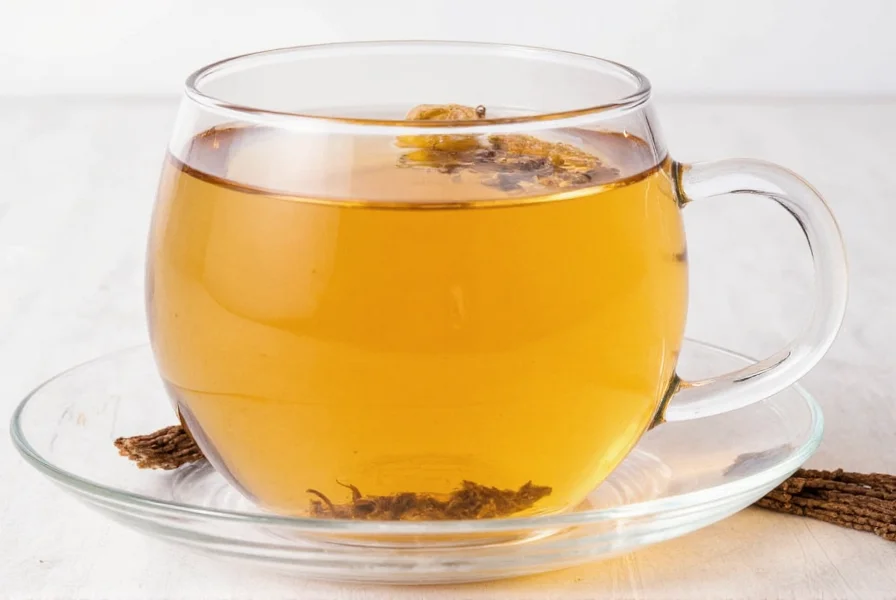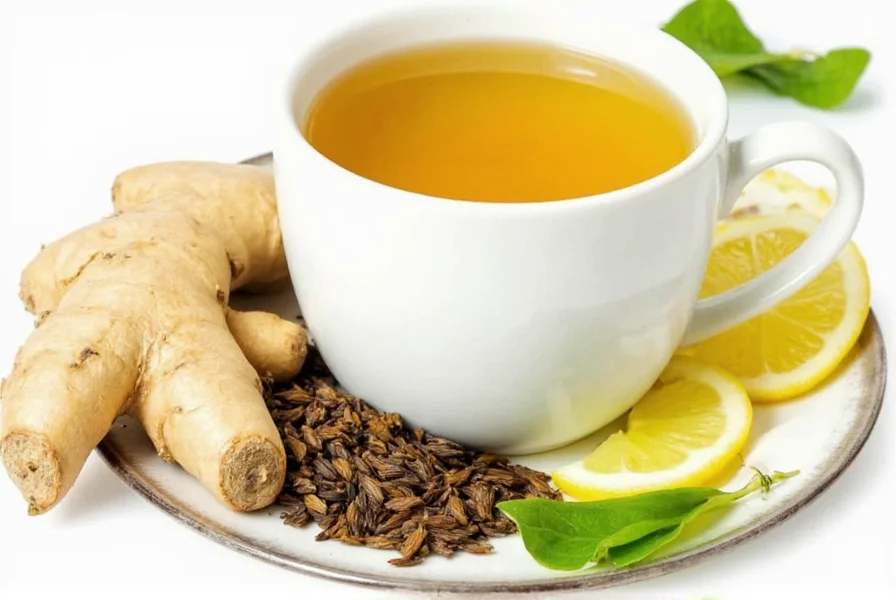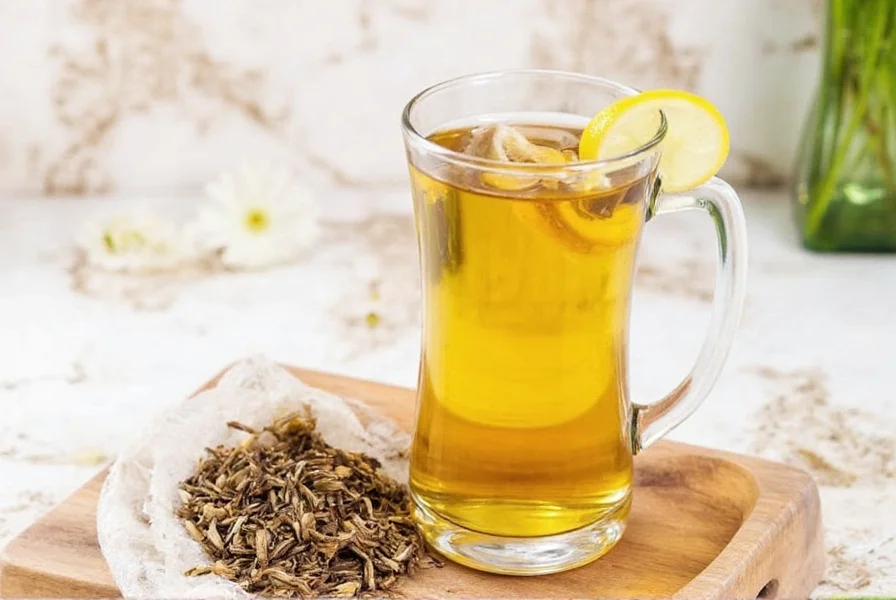When exploring natural wellness options, the ginger and lemongrass Whitestone tea blend stands out as a scientifically supported herbal remedy. This distinctive combination harnesses two powerful botanicals that have been used for centuries in traditional medicine systems across Asia and Africa. The Whitestone designation typically indicates a premium, organic formulation that maintains the purest expression of these ingredients' therapeutic properties.
Understanding the Whitestone Tea Distinction
The term "Whitestone" in ginger and lemongrass tea references specialty tea producers who prioritize organic sourcing and artisanal blending techniques. Unlike mass-produced herbal teas, Whitestone-formulated blends undergo rigorous quality control to preserve the maximum concentration of active compounds in both ginger (Zingiber officinale) and lemongrass (Cymbopogon citratus). These premium blends typically feature whole-leaf ingredients rather than fine powders, allowing for optimal flavor extraction and therapeutic benefit.
Scientifically-Backed Health Benefits of Ginger
Ginger root contains potent bioactive compounds, primarily gingerols and shogaols, which research shows provide significant health advantages. Studies published in the Journal of Medicinal Food demonstrate ginger's effectiveness in reducing nausea, particularly for pregnancy-related morning sickness and chemotherapy-induced nausea. The anti-inflammatory properties of ginger make it valuable for managing osteoarthritis symptoms, with research showing it can reduce pain comparable to ibuprofen in some cases.
Regular consumption of ginger tea supports digestive health by accelerating gastric emptying and reducing intestinal cramping. Its thermogenic properties may also support healthy metabolism, making ginger and lemongrass Whitestone tea a popular choice for those seeking natural wellness approaches.
Lemongrass: More Than Just a Flavorful Herb
Lemongrass contains citral, a compound responsible for its distinctive citrus aroma and numerous health benefits. Research in the journal Phytotherapy Research confirms lemongrass tea's ability to reduce anxiety and promote relaxation without sedative effects. The herb's antimicrobial properties make it valuable for supporting oral health and combating certain foodborne pathogens.
One of the most compelling benefits of lemongrass is its potential to support healthy cholesterol levels. A study in the Journal of Intercultural Ethnopharmacology found that regular lemongrass tea consumption significantly reduced total cholesterol and LDL cholesterol in participants. This makes the ginger and lemongrass Whitestone combination particularly valuable for cardiovascular wellness.
| Compound | Primary Source | Key Health Benefits | Scientific Evidence Level |
|---|---|---|---|
| Gingerols | Ginger root | Anti-inflammatory, nausea reduction | Strong clinical evidence |
| Citral | Lemongrass | Anxiety reduction, antimicrobial | Moderate clinical evidence |
| Shogaols | Ginger root | Pain relief, antioxidant | Emerging clinical evidence |
| Myrcene | Lemongrass | Muscle relaxation, sleep support | Preliminary research |
Synergistic Effects of the Ginger and Lemongrass Combination
When combined in a Whitestone tea formulation, ginger and lemongrass create a synergistic effect that enhances their individual benefits. The warming properties of ginger complement lemongrass's calming influence, creating a balanced herbal infusion that supports both physical and mental wellness. This combination is particularly effective for digestive health, as ginger stimulates digestive enzymes while lemongrass reduces intestinal spasms.
Research suggests that the combined anti-inflammatory effects of both herbs may provide greater relief for inflammatory conditions than either herb alone. The ginger and lemongrass Whitestone tea blend also offers a natural approach to immune system support, with both ingredients demonstrating antimicrobial properties that work through different mechanisms.
Preparing Authentic Ginger and Lemongrass Tea
To experience the full benefits of ginger and lemongrass Whitestone tea, proper preparation is essential. Start with fresh or high-quality dried ingredients: 1-2 inches of fresh ginger root (sliced thin) and 2-3 fresh lemongrass stalks (bruised to release oils). For dried blends, use 1-2 teaspoons per 8 ounces of water.
Bring water to just below boiling (195-205°F), as boiling water can destroy some delicate compounds. Steep fresh ingredients for 8-12 minutes or dried blends for 5-7 minutes. For maximum benefit, avoid adding milk, which can interfere with the absorption of active compounds, though a small amount of raw honey can enhance both flavor and therapeutic properties.

Safety Considerations and Potential Interactions
While ginger and lemongrass Whitestone tea is generally safe for most adults, certain precautions are warranted. Ginger may interact with blood-thinning medications, so those taking anticoagulants should consult their healthcare provider before regular consumption. Pregnant women should limit ginger intake to no more than 1 gram daily from all sources.
Lemongrass is generally recognized as safe, but excessive consumption may cause drowsiness when combined with sedative medications. Individuals with citrus allergies should monitor for potential reactions, though true lemongrass allergies are rare. As with any herbal remedy, those with medical conditions or taking prescription medications should consult a healthcare professional before making ginger and lemongrass tea a regular part of their wellness routine.
Integrating Ginger and Lemongrass Tea into Daily Wellness
For optimal benefits, incorporate ginger and lemongrass Whitestone tea into your daily routine strategically. Morning consumption can support digestion throughout the day and provide gentle immune system activation. An evening cup can promote relaxation and support healthy sleep patterns without causing drowsiness the following day.
Many wellness practitioners recommend a cycle of 5 days on and 2 days off when using herbal remedies regularly, allowing the body to maintain responsiveness to the active compounds. This approach maximizes the long-term benefits of ginger and lemongrass tea while preventing potential tolerance development.

Frequently Asked Questions
What makes Whitestone ginger and lemongrass tea different from regular blends?
Whitestone-formulated ginger and lemongrass tea typically uses higher quality, organic ingredients with careful attention to sourcing and processing. These premium blends maintain optimal concentrations of active compounds through specialized drying and blending techniques, resulting in more consistent therapeutic benefits compared to mass-produced alternatives.
How often can I safely drink ginger and lemongrass tea?
Most adults can safely consume 1-3 cups of ginger and lemongrass Whitestone tea daily. For therapeutic purposes, many practitioners recommend a cycle of 5 consecutive days followed by 2 days off to maintain effectiveness. Those with specific health conditions or taking medications should consult their healthcare provider for personalized recommendations.
Can ginger and lemongrass tea help with weight management?
While not a weight loss solution, ginger and lemongrass tea may support healthy metabolism. Ginger's thermogenic properties can slightly increase calorie expenditure, while lemongrass may help regulate appetite. When combined with a balanced diet and regular exercise, this tea blend can be a valuable component of a comprehensive wellness approach.
Is there scientific evidence supporting the digestive benefits of this tea blend?
Yes, multiple studies confirm the digestive benefits. Research in the European Journal of Gastroenterology & Hepatology shows ginger accelerates gastric emptying by 25%, while lemongrass has demonstrated antispasmodic effects in intestinal tissue. The combination creates a synergistic effect that addresses multiple aspects of digestive health, from enzyme production to intestinal motility.
Can children safely consume ginger and lemongrass Whitestone tea?
Children over 2 years can generally consume small amounts (¼ to ½ cup) of diluted ginger and lemongrass tea. For children under 2, consult a pediatrician first. When preparing for children, use weaker concentrations (½ the adult amount) and avoid adding honey to tea for children under 1 year due to botulism risk. Always introduce new herbal remedies gradually to monitor for potential reactions.











 浙公网安备
33010002000092号
浙公网安备
33010002000092号 浙B2-20120091-4
浙B2-20120091-4